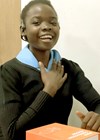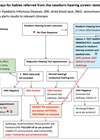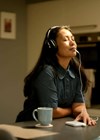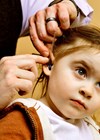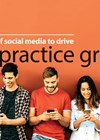Audiology features
Hear Glue Ear - affordable bone conduction and microphone kits
Glue ear is a very common problem in children. This article explores a simple and affordable solution to help overcome some of the challenges it can cause. Background Glue ear (also known as otitis media with effusion – OME) is...
Cacophony: the art of communicating deafness by Anita Ford
Here, we discover the profound exploration of deafness through art by Anita Ford. Her Cacophony series delves into the challenges of communication and isolation. Anita Ford was a prolific printmaker and painter. She studied at Loughborough College of Art, obtaining...
Marshall Chasin: the harmony of music and audiology
Marshall Chasin, synonymous with the science of hearing and the art of music, discusses the techniques and technology he has employed over this career... so far. What’s the difference between your practice now and when you first started out? I...
RNID’s campaign to restore NHS earwax removal services in the UK
Wax removal in the UK has become a topic of intense discussion. Here, Crystal Rolfe discusses the RNID’s findings and approach to tackling the issue. Earwax build-up can cause painful and distressing symptoms – a 2022 RNID survey found people...
Annelies Kusters: exploring deaf communities globally
Pioneering deaf scholar, Annelies Kusters, shares insights from her global research journey spanning two decades in deaf communities worldwide. You’ve travelled the world extensively through your work – what’s surprised you most about the different communities that you’ve studied? My...
Enhancing the pure-tone average calculation method for reporting hearing outcomes: the need for a transition to the logarithmic mean
Comparing studies requires common approaches. Ali Faramarzi takes a moment to consider how to tackle the presentation of audiometric data in publications. Uniformity in reporting hearing outcomes is paramount for accurate evaluation and comparison of hearing-related research. Standardised guidelines are...
How to deliver bad news better
Delivering bad news well takes experience and time. The Ida team recommend the SPIKES protocol; providing structure for relaying bad news, giving confidence to those delivering it, and leaving recipients feeling cared for and informed. It’s among the most distressing...
Audible Contrast Threshold – a new test to guide setting help-in-noise features in hearing aids
A new diagnostic test that is quick and has directly applicable results to hearing aid settings has arrived, but how does it work? Leigh Martin has the answers. In an earlier article for ENT & Audiology News, Parmar and Rajasingam...
Early detection pathways for congenital cytomegalovirus for infants referred from the newborn hearing screen
This article discusses requirements for an early congenital cytomegalovirus (cCMV) detection pathway to ensure children do not miss out on the opportunity for timely diagnosis and treatment. The pathways described are currently in use in England and apply to well...
Tinnitus treatment device from concept to commercialisation
Innovation in the field of healthcare is fraught with nearly insurmountable challenges. Bringing a novel product to the market requires a new (patentable) idea that can be reduced to practice, manufactured at scale, and can pass all regulatory barriers. In...
Effective and profitable provision of paediatric audiology care in the private sector
Similar to other specialty areas of hearing healthcare, paediatric audiology is a potential net loss for a private-sector, for-profit, business. Given the time-intensive needs of patients with cochlear implants, tinnitus and those who are under the age of 18 years...
The use of social media to drive practice growth
Cliff Olson is the most successful user of social media in the hearing care industry as of the date of this publication. His videos have been viewed worldwide, and he has more YouTube followers than all the major hearing aid...


